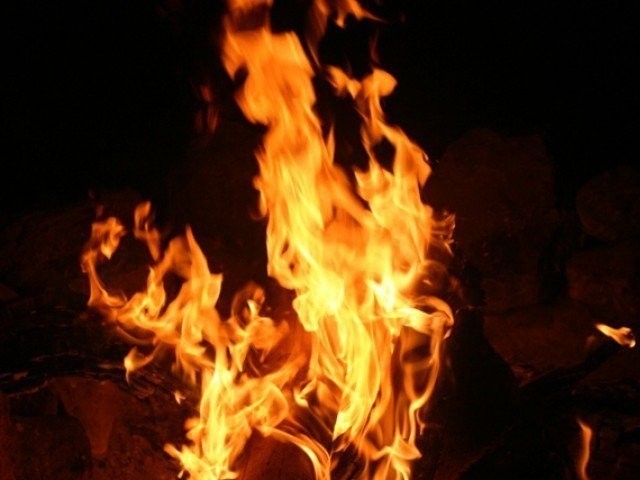
Luckily the hospital is just 10 minutes away, but unfortunately, the patients are turned away as the medical facility lacks a burns unit to deal with such severe injuries.
This forces the rescue team to embark on another journey — one that sees them rush towards Jinnah hospital. Covering the distance takes another 30 minutes and by the time they reach, two of the victims are already dead and two more breath their last at the hospital. The sole survivor is still battling for survival.
“If the LGH had a burns unit, these lives could have been saved,” comments Dr Ahmed from the Jinnah hospital.
Dr Ali Khawaja of the Mayo Hospital tells The Express Tribune that in January 2015, the government inaugurated a 200-bed burns unit at Jinnah hospital. Only 20 of them are functional and the remaining beds are being used for ‘other purposes’.
According to officials, burns units are fully functional at Jinnah hospital in Lahore, Nishtar Hospital in Multan, Allied Hospital in Faisalabad, Holy Family Hospital in Rawalpindi.
The facilities at Mayo, Ganga Raam and Yakki Gate hospitals of the provincial capital are not in full working order.
Dr Khawaja adds that there are only four beds at Mayo Hospital, while Yakki Gate hospital has two and the Ganga Raam Hospital burns ward is completely dysfunctional. “Who cares if the poor people are losing their lives?”
The doctor continues that Lahore has a population of over 10 million people and fires occur frequently. He finds it surprising the government has not even been able to establish a proper burns unit.
According to data provided by Rescue 1122, 3,390 incidents of fire have been recorded in Lahore during 2016 alone while there were 13,718 similar occurrences across Punjab.
A total of 72 people have lost their lives while hundreds have been crippled for life.
What can be done?
Dr Salman Kazmi of the Young Doctors Association of Pakistan says the first burns unit of the province, established at Mayo Hospital, has been catering to a large number of patients.
He says there is a shortage of beds, limited resources and inadequate staff due to care for extraordinary number of patients. “Not only Mayo Hospital but the burns unit at Jinnah also requires immediate expansion to tackle the growing number of burns cases as serious incidents are often referred to these facilities from all over the province,” he says.
He adds burns units should have a sterilised and isolated environment with separate bathrooms to prevent cross infections.
Dr Kazmi continues that to avoid the transfer of microorganisms by carriers such as staff, patients and airborne particles, priority should be given to reducing movement, controlling waste material and allocating zones for each category of patient. “Unfortunately, protocols are not being followed at the available units of state-run facilities” he complains.
Since burns treatment is costly and high-risk, a 50-bed fully functional unit is needed at every district headquarters (DHQ) hospital to reduce mortality rate in severe burn cases, Dr Kazmi believes.
State of the art
A health department spokesman, when contacted, claimed the Jinnah hospital burns unit was state-of-the-art and was providing adequate facilities to victims admitted to the facility.
“The facility has five operation theaters and 65 beds are functional” he added.
The spokesperson said both admitted and outdoor patients were being operated upon under the same roof. “Besides the Jinnah hospital facility, those at Mayo and Ganga Raam are also fully functional and treating patients.”
Published in The Express Tribune, December 25th, 2016.

1730360426-0/Menendez-Brothers-(2)1730360426-0-165x106.webp)
1732534556-0/taylor-(14)1732534556-0-165x106.webp)
1725872216-0/Tribune-Pic-(3)1725872216-0-165x106.webp)
1732532771-0/BeFunky-collage-(89)1732532771-0-165x106.webp)












COMMENTS
Comments are moderated and generally will be posted if they are on-topic and not abusive.
For more information, please see our Comments FAQ